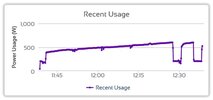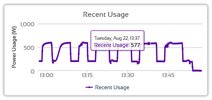- Joined
- 27 Jan 2008
- Messages
- 24,313
- Reaction score
- 2,777
- Location
- Llanfair Caereinion, Nr Welshpool
- Country

I tried a smaller load today

 bit faster, but still slow, I am sure when we first got it is was not that slow, maybe different cycle, either washing machine or dryer?
bit faster, but still slow, I am sure when we first got it is was not that slow, maybe different cycle, either washing machine or dryer?
As to cost, I must clearly put a value on my wife's time, how long to hang out clothes, how long to take them in again, and also remove any unwanted creases due to being pegged out, and finish off any drying, so would need putting in an airing cupboard first then away in draws etc, instead of putting directly away.
By time one adds the time to put clothes out and bring them back in even at minimum wage using the washing line is highly unlikely to be an economic option.
However when we got the old vented tumble drier there was a version which used less power and dried over night, took maybe 3 to 4 hours to dry, so the heat pump dryer would need comparing with one of those, not a rapid dryer.

 bit faster, but still slow, I am sure when we first got it is was not that slow, maybe different cycle, either washing machine or dryer?
bit faster, but still slow, I am sure when we first got it is was not that slow, maybe different cycle, either washing machine or dryer?As to cost, I must clearly put a value on my wife's time, how long to hang out clothes, how long to take them in again, and also remove any unwanted creases due to being pegged out, and finish off any drying, so would need putting in an airing cupboard first then away in draws etc, instead of putting directly away.
By time one adds the time to put clothes out and bring them back in even at minimum wage using the washing line is highly unlikely to be an economic option.
However when we got the old vented tumble drier there was a version which used less power and dried over night, took maybe 3 to 4 hours to dry, so the heat pump dryer would need comparing with one of those, not a rapid dryer.

